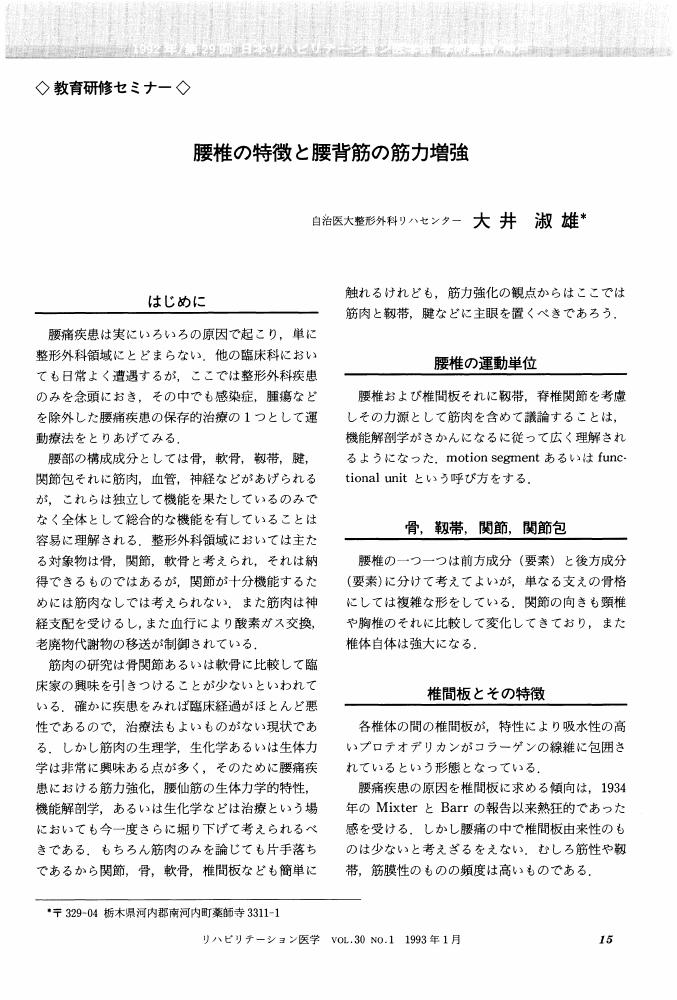1 0 0 0 OA マスカット・ベーリーAワインの品質向上に関する革新的技術開発
マスカット・ベーリーA(MBA)種赤ワインの品質向上を目的として、市販ワインにおけるγ-ラクトン類およびフラネオールの香気成分含有量を調査するとともに、γ-ラクトンの生成機構の解析およびワインの含有量に及ぼす醸造条件の影響について検討した。γ-ノナラクトンは、ブドウ品種間のリノール酸含有量の差異、発酵工程における果皮および種子の浸漬、ブドウの収穫時期および発酵に用いる酵母菌株の影響を受けて含有量が異なると推測される。さらに、新たに開発したMBAの副梢果房を用いる赤ワインの醸造方法は、γ-ノナラクトンおよびフラネオールの含有量を高め、ワイン品質の向上に有効であることを明らかにした。
1 0 0 0 パン製造過程におけるブドウ球菌エンテロトキシンAの産生と失活
- 著者
- シャヒーム エラヒ 藤川 浩
- 出版者
- 公益社団法人 日本食品衛生学会
- 雑誌
- 食品衛生学雑誌 (ISSN:00156426)
- 巻号頁・発行日
- vol.61, no.4, pp.138-142, 2020-08-25 (Released:2020-10-02)
- 参考文献数
- 20
黄色ブドウ球菌食中毒は食品中で産生されたブドウ球菌エンテロトキシン(SE)によって起こる.本食中毒はSE型の中で多くの場合,エンテロトキシンA (SEA)が原因物質である.各種食品中での本菌の増殖とSEA産生に関する研究は多いが,パンに関する研究はほとんどない.そこで本研究では通常のパン製造工程において,パン生地発酵中のブドウ球菌増殖とSEA産生性,さらに焼成中のSEA失活について検討した.25または35℃で4時間の発酵中,パン生地(全重量約470 g)中での本菌増殖およびSEA産生は認められず,このような条件の発酵中,生地におけるSEA産生リスクは無視できるほど小さいと推察された.一方,生地に接種したSEA (6.0および0.56 ng/g)は200℃の焼成中それぞれ20および10分後には検出できなかった.この結果は生地の焼成時間(25分)でこれらの濃度のSEAを十分に失活させることを示した.本研究で得られた製造過程における生地中のSEA産生および失活の結果はパン製造における微生物学的な食品安全のための有用な情報となるであろう.
1 0 0 0 OA 銃後の大阪 : 軍事援護通信
- 出版者
- 大阪市社会部軍事援護課
- 巻号頁・発行日
- vol.第1報 西成区版, 1939
1 0 0 0 OA 腰椎の特徴と腰背筋の筋力増強
- 著者
- 大井 淑雄
- 出版者
- 社団法人 日本リハビリテーション医学会
- 雑誌
- リハビリテーション医学 (ISSN:0034351X)
- 巻号頁・発行日
- vol.30, no.1, pp.15-17, 1993-01-18 (Released:2009-10-28)
1 0 0 0 鉄道古文書 : 明治前期鉄道行政資料集 : 鉄道博物館所蔵
- 出版者
- 丸善
- 巻号頁・発行日
- 0000
1 0 0 0 OA アメリカの映画検閲とカトリック戦時協議会
- 著者
- 吉村 いづみ
- 出版者
- 名古屋文化短期大学
- 雑誌
- 研究紀要 (ISSN:09148353)
- 巻号頁・発行日
- vol.31, pp.6-10, 2006-03-16 (Released:2016-12-15)
1 0 0 0 OA ワクモ(Dermanyssus gallinae)の問題と対策の試み
- 著者
- 村野 多可子
- 巻号頁・発行日
- vol.43, pp.23-30, 2007 (Released:2011-11-25)
国内におけるワクモ(Dermanyssus gallinae)の浸潤率は、産卵鶏では85.2%と高い値を示した。ワクモによる被害は、潰れた飽血ワクモの血液や排泄物などの付着による汚卵の発生、人への被害、産卵率への影響、鶏の貧血・死亡がなどであった。また、ワクモ寄生鶏産出卵では卵重の減少、濃厚卵白・H.Uの低下などがみられた。市販されているワクモ駆除目的の殺虫剤の大半に抵抗性の出現が確認されたため、現時点でワクモ防除のために考えられるいくつかの方法を試みた。ワクモが瞬時に死亡する水温は65℃以上であった。24時間のホルマリン薫蒸によるワクモの死亡率は34.8〜62.2%であり、産出された卵の孵化率は90%以上を示した。環境制御資材によるワクモの駆除は資材により大きく効果が異なった。年々市販殺虫剤に対するワクモの抵抗性出現が増加してきている。早期に殺虫剤を含めた新しい駆除法の開発が切望される。
1 0 0 0 OA ねらった被写体を逃がさない 物体追跡技術
- 著者
- 藤吉 弘亘
- 出版者
- 一般社団法人 映像情報メディア学会
- 雑誌
- 映像情報メディア学会誌 (ISSN:13426907)
- 巻号頁・発行日
- vol.62, no.6, pp.849-855, 2008-06-01 (Released:2010-06-01)
- 参考文献数
- 17
- 被引用文献数
- 2 1
1 0 0 0 OA 少子化の中の教員養成と教育学 教員養成系大学・学部の挑戦
- 著者
- 毛利 猛
- 出版者
- 一般社団法人 日本教育学会
- 雑誌
- 教育学研究 (ISSN:03873161)
- 巻号頁・発行日
- vol.87, no.2, pp.203-213, 2020 (Released:2020-09-30)
少子化の進行に伴って新しい「大学の大衆化」の段階に突入し、教員養成の自然な基盤が掘り崩されている中で、教職が労働市場で急速に魅力を失いつつある。教員の「量の確保」の問題は「質の担保」の問題と必ず連動する。これらの教員養成をめぐる危機について考察した上で、実践力養成への期待の高まりと失望、それへの「大学における教員養成」と「教育学」教育の側からの対応について、この間の教員養成政策とも絡めながら論じた。
1 0 0 0 OA 分割的注意と加齢
- 著者
- 保阪 正康
- 出版者
- 毎日新聞出版
- 雑誌
- サンデー毎日 (ISSN:00395234)
- 巻号頁・発行日
- vol.94, no.31, pp.34-37, 2015-07-26
1 0 0 0 天皇機関説事件 (特集 憲法のあの瞬間(とき))
- 著者
- 西村 裕一
- 出版者
- 有斐閣
- 雑誌
- 論究ジュリスト = Quarterly jurist (ISSN:21871302)
- 巻号頁・発行日
- no.17, pp.11-17, 2016
1 0 0 0 天皇機関説事件と国体明徴運動から (特集 天皇制)
1 0 0 0 IR 表現としての宝塚歌劇に関する考察 ~ 教育理念と100年の歴史 ~
- 著者
- 加藤 暁子
- 雑誌
- 十文字学園女子大学短期大学部研究紀要 = BULLETIN OF JUMONJI COLLEGE (ISSN:02867109)
- 巻号頁・発行日
- no.43, pp.65-75, 2013-02-28
1 0 0 0 OA カナータイプの自閉症との40年間の精神分析的心理療法から学んだこと
- 著者
- 乾 吉佑
- 出版者
- 専修大学人間科学学会
- 雑誌
- 専修人間科学論集. 心理学篇 (ISSN:21858276)
- 巻号頁・発行日
- vol.3, pp.11-22, 2013-03-15
本論考は,日本心理臨床学会大会での学会賞受賞講演を基に作成されたものである。本邦でも自閉症児(者)との長期的な心理療法は経験されているであろうが,未だカナータイプの自閉症との40年間の治療経過の報告は見られていない。40年間の治療経過のまとめと,そこから学んだことを取り挙げ,臨床心理学専攻の若き後輩の臨床活動に益するものとなることを願って報告する。
1 0 0 0 女性化される現代ヨガ:日本におけるブームとその変遷
- 著者
- 入江 恵子
- 出版者
- 日本スポーツとジェンダー学会
- 雑誌
- スポーツとジェンダー研究 (ISSN:13482157)
- 巻号頁・発行日
- vol.13, pp.148-158, 2015
Modern yoga in Japan specializes in certain factors after having experienced three booms in its popularity, including the tendencies of feminization, consumer culture, fashion, medicine, and spirituality. Specifically, feminization is an outstanding characteristic of yoga in Japan as some yoga studios will only permit females to participate. On the other hand, yoga in Japan excludes a religious and/or philosophical element, which is present in yoga practice in other countries. As such, this paper examines how Japanese yoga has been feminized through the elimination of religious factors. For this purpose, this study analyzed the article, autobiographies, and data from the fieldwork. This study found that incidents of religious cults in Japan once damaged the whole yoga community so severely that most yoga studios were banned as a result. One yogi decided to focus on the female population in order to eradicate the stigma attached to yoga, and the social background of "spiritual culture" and "consumer culture" assisted in his arbitrary decision. Finally, the images and the way that yoga is "consumed" in Japan reflect the gender norms of today. Modern yoga in Japan places importance on "healing/relaxing" for beauty, and never mentions enhancing sexual ability like in other countries.
1 0 0 0 OA 邪馬台国はどこか (昭和六十一年十一月十二日 提出)
- 著者
- 服部 四郎
- 出版者
- The Japan Academy
- 雑誌
- 日本學士院紀要 (ISSN:03880036)
- 巻号頁・発行日
- vol.42, no.2, pp.93-137, 1987 (Released:2007-06-22)
Firstly, the author agrees with Professor Taro Sakamoto's (M.J.A.) opinion to the effect that the ancestors of the Japanese nation came over to Japan from Siberia via the Mamiya Straits, Sakhalin, and Hokkaido in the early Stone Age. He also approves of Professor T. Sakamoto's theory that Yamatai Queendom was in Kyushu, not in Yamato (Nara Prefecture).The author assumes that the distances described in the so-called Gishi Wajinden are those between the capitals of the kingdoms.The author's hypothetic identification of the capitals of the kingdoms are as follows.Matsura Kingdom: Karatsu City including Sakura-no-baba.Ito Kingdom: Around the Mikumo-Iwara district in Maebaru Town.Fumi Kingdom: Umi City and the adjacent district.As for the capital of Na Kingdom he advances a new theory that it must have been located in the area between Ko-no-su Hills and Mt. Higashi-Abura-yama in Fukuoka City.In regard to Toma Kingdom, the author rejects all the theories advanced so far, and he proposes a new hypothesis that the capital was located around the consecrated spring of Asaduma in Kurume City.The most problematic capital of Yamatai Queendom was located, according to the author, in Kumamoto City.Probably around the end of the 3rd century A.D. it was destroyed to ashes by the Kumaso people (including that of Kuna Kingdom), a branch of the Japanese, who attacked Yamatai Queendom from the south, and the name Yamatai was abolished by them and passed into oblivion.
- 著者
- 服部 四郎
- 出版者
- 日本学士院
- 雑誌
- 日本學士院紀要 (ISSN:03880036)
- 巻号頁・発行日
- vol.43, no.1, pp.21-27, 1988 (Released:2007-06-22)
- 被引用文献数
- 1
- 著者
- 上野 善道
- 出版者
- 日本学士院
- 雑誌
- 日本學士院紀要 (ISSN:03880036)
- 巻号頁・発行日
- vol.42, no.1, pp.15-70, 1987
In part (2), the central type (1/2•3/4/5) is described. It covers a wide area over most of the Kinki districts around Kyoto and Osaka. It is also found in Shikoku districts such as Kochi, Tokushima and Matsuyama.<br>The proto-accent of the central type is reconstructed as follows:<br>From this, the following varieties of South Kinki dialects are derived historically:<br>The second-stage accent (V) 1/2•3/4/5-Tanabe, Ryuzin, Kyoto, Katsuura, Owase, Kumano, Atawa<br>The third-stage accents {(ム) 1/2•3/4•5 (Nairin type)-Kitayamagawa, Totsukawa (ワ) 1•4/2•3/5 (Tarui Type)-Hongu<br>The fourth-stage accents {(a) 1/2•3•4•5-Furue, Nakatani, Sakamoto (h) 1•4/2•3•5-Nishi-hiura The transition from (V) to (ム) on the Kumano-nada coast is gradual both structurally and geographically.




